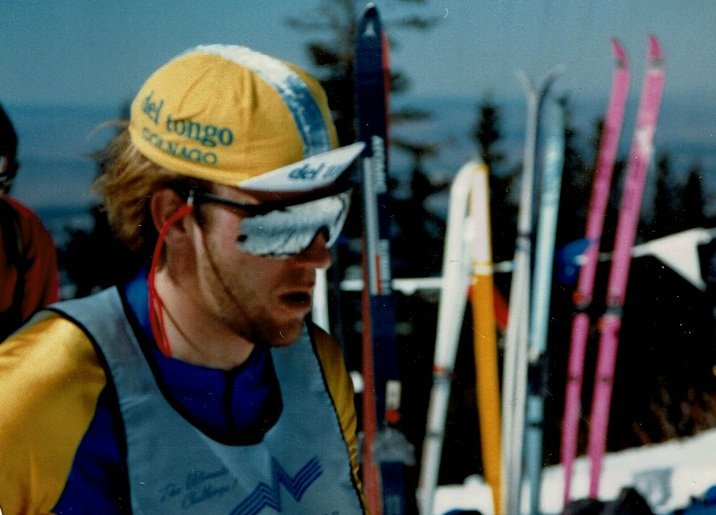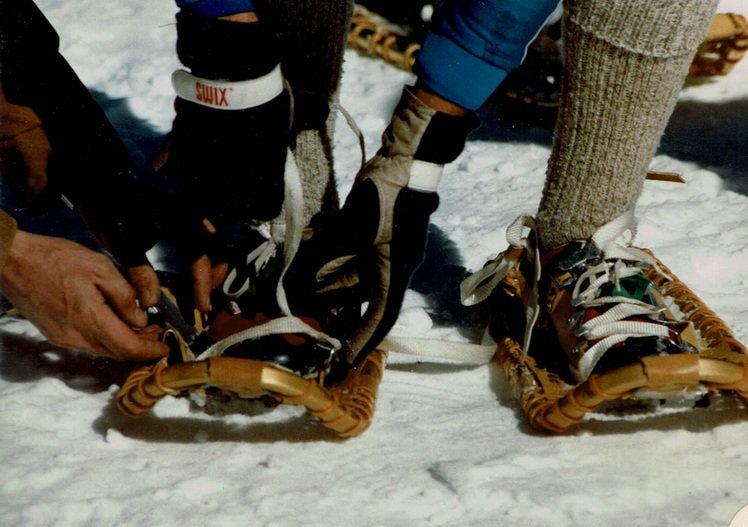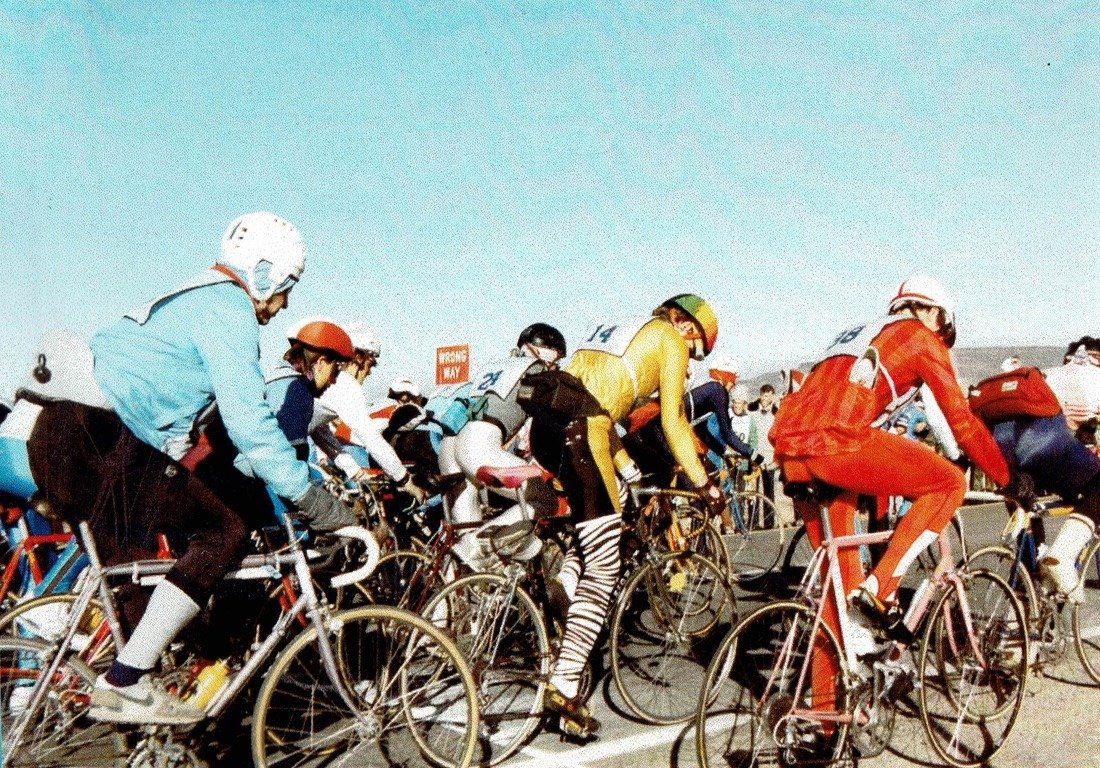The Basics
The Quad is a gear and logistics intensive endeavor. In the 40 years since its inception, the race has seen countless iterations of gear setups and strategies. This guide will help you to understand the basics, but it’s up to you to determine your setup. Don’t worry- you can always tweak it next year! And it you’re still running your 1986 Schwinn, white tube socks and rad Oakley shades, you’re in luck! Looks like fashion really does repeat itself.
Teams and pairs participating in the run, ski or snowshoe legs will need to ride the shuttle to their starting transition area. Parking is limited at our transition zones and we can’t guarantee space for everyone. There are limited parking spots available at the bike/ run transition, and if you choose to drive there you must stay until late afternoon when the roads are reopened. No exceptions. No participant vehicles will be allowed beyond the bike/ run transition.
We transport your gear up the mountain on the morning of the race. All equipment to be transported must be checked in by 8 PM on Friday. No exceptions.
We use a tried and true duct tape color coding system to identify the final destination of your transition bags. Scroll to the bottom of this page for the full rundown. Marking of all equipment will take place at equipment check-in and colored tape will be provided.
There will be no equipment checked in on Race Day.
Team members should transport their own equipment (with the exception of skis and poles) to be the desired transition by carrying it with them on the shuttles. Skis and poles are not allowed on the shuttles.
During the race, Soloists and Pairs must carry their snowshoes with them from the run/ski transition. There will be no gear transported beyond the run/ ski transition. These racers must carry their snowshoes during both the uphill and downhill ski legs.
All equipment must be retrieved by 6 p.m. on Race Day.








Gear recommendations
Bike- most participants use road or gravel bikes. Every year we see a few brave souls on mountain bikes, but they pay the price in weight and drag. The entire bike course is paved. The climbing is steep and the descending is fast. If you’re serious, choose your drivetrain accordingly.
Run- standard running shoes will do. The road is almost always snowpacked and icy in spots, so you might consider a traction spike like Yacktrax, or trail runners at a minimum. Diehard locals prefer to install short screws in the soles of their Quad specific race shoes.
Ski- the debate rages on year after year. Expert XC skiers have no problem navigating the steep, icy downhill turns on classic or skate skis but those with less skill tend to struggle. Historically, the race was done on skate and classic xc skis but we’ve seen a trend toward AT (Alpine Touring) setups in recent years. There’s a weight penalty involved with AT setups, but control and safety on the downhill improve dramatically. It’s your choice. Pick your poison and smirk at the critics as you fly by. Splitboards are allowed, but be aware that there is 400 yards of flat terrain at the bottom of the downhill course. Unless you’re an expert skate skier, use skins.
Snowshoe- the snowshoe course is groomed by snowcat and snowmobiles, so you won’t need much floatation. Typically, small and light snowshoes are best but really any standard snowshoe will work. Poles are optional on this section.
Equipment packaging and marking
All equipment is to be bound with GREY duct tape and labeled with COLORED duct tape. Volunteers will cut all grey duct tape when your gear packages arrive at their destination. Colored tape will not be cut.
All equipment should be clearly marked with your color-coded race number, including any items that will be separated from you during the race (bike, helmet, running shoes, poles, snowshoes, ski boots, backpacks, gloves, hats, jackets, bags of clothing or food).
Colored tape is provided at equipment check-in and is used to identify the destination of your equipment.
Tips & notes for Soloists and Pairs
Place your run up and bike down gear in one bag, preferably one with a zipper. The bag will be transported to the Bike/Run transition and placed in the numbered rack that correspond to your race number. Your bike will be located in these numbered racks when you return from the Run.
Bundle together your skis, snowshoes, and bag with run down gear, food, and water. This equipment will be transported to the Run/Ski transition and placed in the numbered racks that correspond to your race number.